If you have essential data on your laptop, a spare laptop hard disk, or if your desktop’s primary hard disk has failed, you may ask whether you can use a laptop hard drive on a desktop.
Fortunately, the answer to that question is a resounding Yes! You can use a Laptop Hard Drive in a desktop by plugging in the SATA Data and the SATA power cable just as you would with a standard desktop hard disk.
The same idea, however, does not work the other way around, meaning you cannot use a desktop’s hard drive in a laptop. Laptops do not support the 3.5″ hard disk form factor.
In the following text, I will explore how you can use a laptop hard drive on a desktop and also talk about the benefits and the drawbacks, but first, a little primer on the complex drive form factors and the SATA protocol.
TABLE OF CONTENTS
What is the SATA Interface?
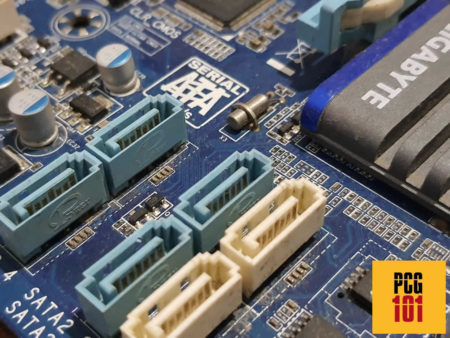
SATA is an interface used primarily to add storage devices to your PC. The devices that can be used with the SATA interface are as follows:
- 3.5″ Desktop Hard Drives
- 2.5″ Laptop Hard Drives
- 2.5″ SATA SSDs
- Optical Drives (CD/DVD/Blu-Ray)
SATA interface is cross-compatible, meaning it can work across generations and devices. The most current version of the SATA is 3. You can use a SATA 2.0 device on a SATA 3.0 slot and vice versa.
Additionally, you can use a 2.5″ drive instead of a 3.5″ drive and vice versa.
Also Read: What are SATA Ports Used For?
What is the 2.5″ and 3.5″ Hard Drive Form Factor?
Hard Disk Drives (HDD) come in two forms factors:
- 2.5″ – aka Laptop Drive
- 3.5″ – aka Desktop Drive
These numbers represent the diameter of the spinning disks inside the hard drive. The actual rectangular dimensions of the hard disk are different.
2.5″ – Small Form Factor
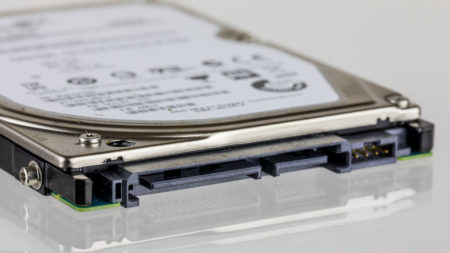
2.5″ is a small form factor. Hard drives conforming to this form factor are found in laptops and portable hard drives.
The approximate dimension of the drive is 4.0″ x 2.75″ x 0.4″ (D x W x H) (100 x 69.85 x 12 mm)
3.5″ – Large Form Factor
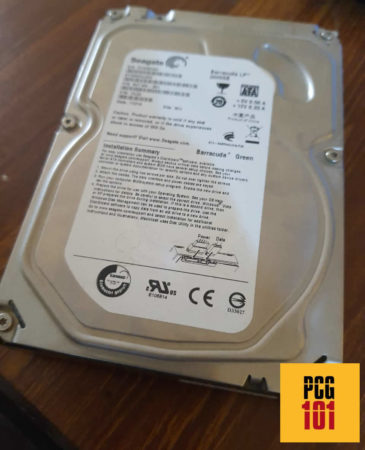
3.5″ is currently the largest form factor for desktops and stationary external hard drives.
The approximate dimension of the drive is 5.7″ x 4.0″ x 1.0″ (D x W x H) (146 x 101 x 26 mm)
Can You Use a Laptop Hard Drive on a Desktop?
Yes, you can easily use a laptop hard drive on a desktop.
All you need to do is plug the 2.5″ laptop hard drive with the following cables:
- SATA power cable
- SATA data cable
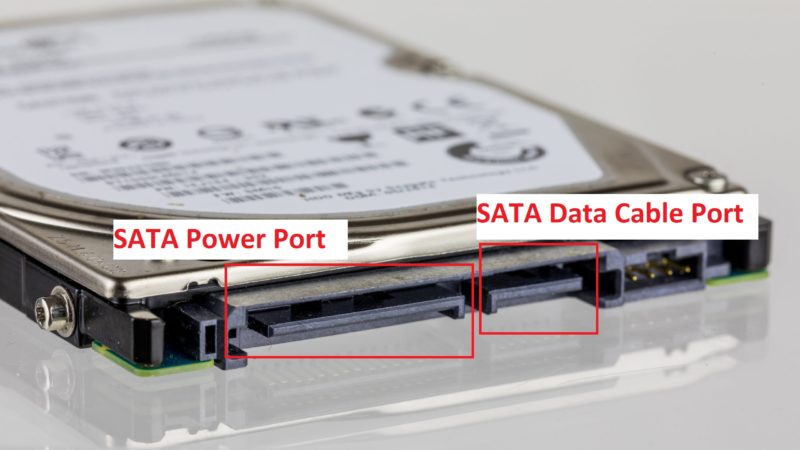
You need to provide both power and data cables to the hard drive.
SATA Data Cable
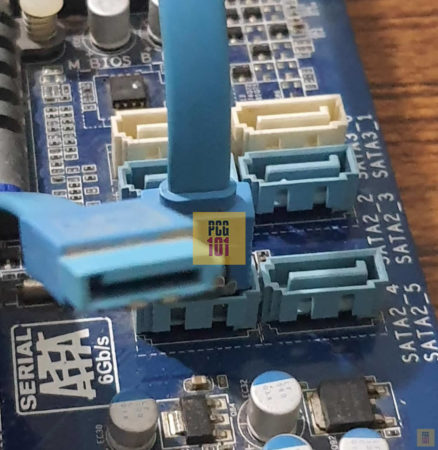
SATA Data cables connect to the SATA ports on the motherboard on one end and to the hard drive on the other end.
Both ends of the SATA Data cable are identical, so you don’t need to worry about the proper orientation.
SATA Data cables can be identified through their L-shape key.
SATA Data Cables are often provided with the motherboard package.
You can easily procure a new SATA cable if you do not have a spare line.
Also Read: What Does SATA Cable Look Like?
SATA Power Cable
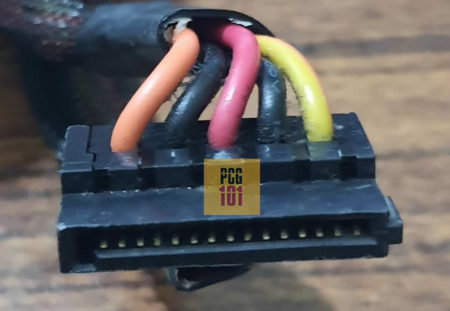
The SATA power cable is the other cable you need to attach to the 2.5″ hard drive.
This comes with the Power Supply Unit.
Also Read: How Many SATA Cables Do I Need?
SATA Hard Drives are Plug and Play
Once the data and power cables are installed on the 2.5″ hard drive, you should be ready.
Generally, the hard drives installed on the SATA interface are plug-and-play, meaning you do not need to tamper with the settings in BIOS.
Setting the 2.5″ Hard Drive as the Boot Drive
If you want to assign the newly installed hard drive as the primary boot drive, you may have to give that through BIOS, mainly if multiple industries are established.
Converting a 3.5″ Drive Bay to a 2.5″ Drive Bay in the PC Case
Most desktop PC Cases out there have drive bays only for 3.5″ hard drives. This causes the issue of adequately installing the 2.5″ inch drive inside the case.
The 2.5″ drive should be harnessed to avoid accidental damage.
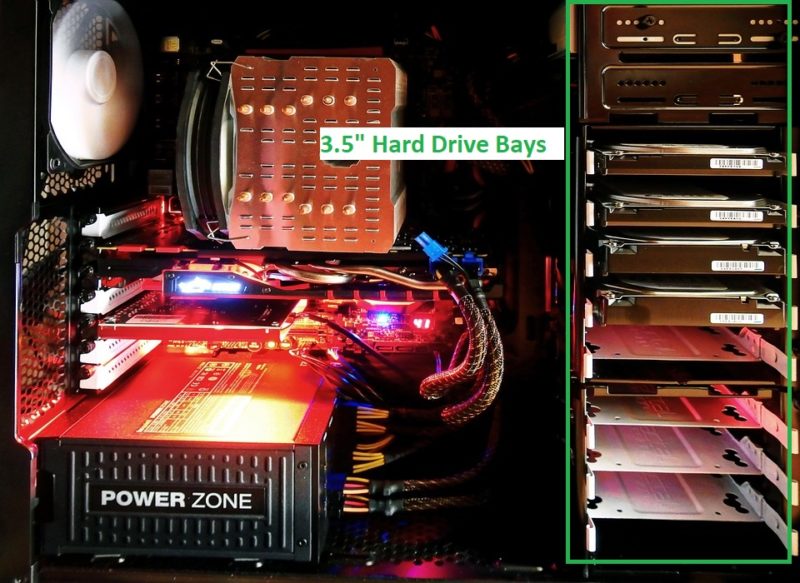
Fortunately, you can convert a 3.5″ drive bay into a 2.5″ drive bay using a very inexpensive adapter.
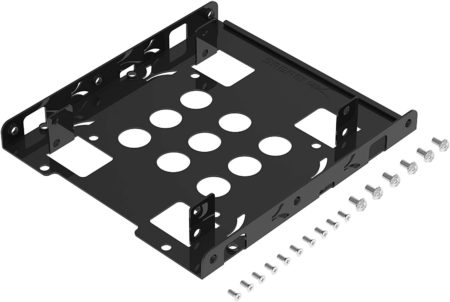
Also Read: Are All Hard Drives Compatible with all Motherboards
A Note on SSDs: Can You Use a Laptop SSD on a Desktop?
Yes, you can use a laptop SSD on your desktop and vice versa.
Whether your laptop has the NVMe SSD or the SATA SSD, they can be installed on the desktop, given that it has the appropriate slots.
There are two kinds of SSDs:
- SATA SSD
- NVMe SSD
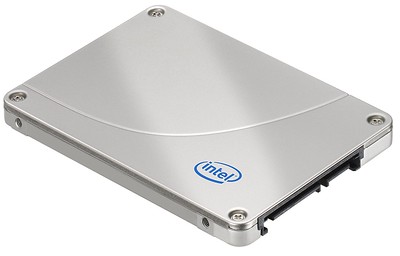
SATA SSD uses the SATA interface, and it can be found in 2.5″ and M.2 form factors.
NVMe SSD, on the other hand, is superior in performance as it uses the PCIe interface. NVMe SSD only uses the M.2 form factor and cannot be found in the 2.5″ form factor.

For SSDs with M.2 form factor, as shown above, you need to have the appropriate M.2 slot on the motherboard to plug it in.
Also Read: Does SSD Need Power?
Using an External Enclosure or USB Adapter to Plug Laptop Hard Drive into the Desktop
You can also use the laptop hard drive on a desktop externally by procuring a SATA-USB adapter or an external enclosure.
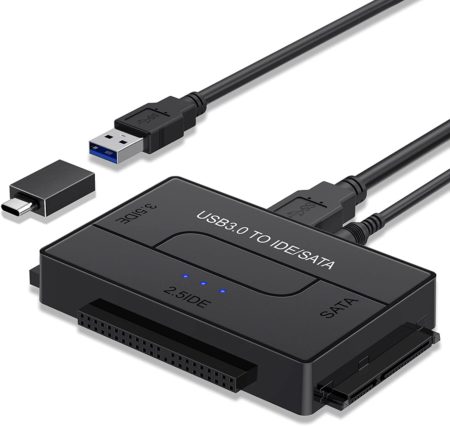
A SATA to USB adapter kit comes with SATA to USB cable and a power adapter for plugging the hard drive into the wall socket.
This is an excellent method for externally using a 2.5″ and a 3.5″ hard drive on any computer.
However, a critical drawback of this method is that you won’t be able to use the laptop hard drive as a boot drive. Also, this isn’t the perfect method to turn your hard drive into a portable drive.
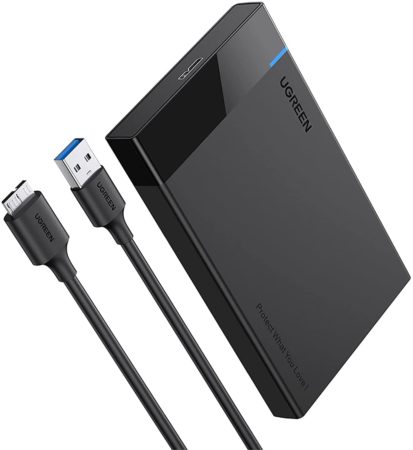
You can convert your 2.5″ drive to a portable external hard drive using a 2.5″ enclosure. The enclosure provides both data and power to the 2.5 industry installed within.
Again, just like the previous method, you won’t be able to use your laptop hard drive on a desktop as a boot drive.
The only way to use your laptop hard drive in a desktop as a boot drive is to connect it internally through the SATA data cable.
Also Read: Can I Upgrade My Laptop Graphics Card?
Pros and Cons of Using a Laptop Hard Drive in a Desktop
There are some important pros and cons to using a 2.5″ drive instead of a 3.5″ drive on a desktop.
1. 2.5″ Drives Often Have Lower Capacity
2.5″ drives, due to their limited size, offer a maximum of 5 TB.
Compare this to a 3.5″ drive which can be found featuring 20TB.
2. 2.5″ Drives Have Higher Cost/GB
2.5″ drives have a higher cost per GB.
Take, for instance, the prices of 2.5″ and 3.5″ Seagate Barracuda. At the time of writing this article, the following is the price.
- Seagate Barracuda – 3.5″ – 5400 RPM 256 MB Cache – 6 TB – $142 = $23.66/TB.
- Seagate Barracuda – 2.5″ – 5400 RPM 128 MB Cache – 5 TB – $155 = $31/TB
Hence you can see that the average cost per TB of a 2.5″ drive is much higher than that of a 3.5″ drive.
3. 2.5″ Drives Have a Lower Cache
Hard drives cache are temporary high-speed memory that improves the transfer rate of the hard drives. They help minimize wait times and assist when multi-tasking or accessing multiple applications/files from the industry simultaneously.
2.5″ hard drives, unfortunately, on average, have a lower cache memory compared to their 3.5″ counterparts in the same price category.
4. 2.5″ drive Have a Slower Transfer Rate
The read-and-write data rate of hard drives is measured in MB/s.
It is governed by many factors, such as the number of sectors a hard disk has, the number of tracks, the number of platters, and the RPM of the drive.
3.5″ drives have more giant platters, tracks, and sectors.
Additionally, the faster the drive rotates, the better the transfer speed. The two typical transfer speeds are 5400 RPM and 7200 RPM.
Finding 7200 RPM hard drives on a 3.5″ form factor is far easier than finding 2.5″ hard drives.
5. 2.5″ Drives Consumer Lower Power
The significant part about 2.5″ hard drives is that they consume less power. Hence, on a laptop that runs on battery, the lower power consumption can help in extending battery life.
Due to this nature, 2.5″ drives can also be portable hard drives.
Also Read: How to Check SSD Compatibility With Laptop or Desktop?
Should You Use a Laptop Hard Drive on a Desktop?
Given the points mentioned above, if you are seeking performance and value, it is not ideal to go out and especially seek out a 2.5″ laptop drive for your desktop.
However, if you have a spare 2.5″ drive or want to access your laptop’s files, you can use it on a desktop.
Also Read:
Final Words
I discussed whether you could use a laptop hard drive on a desktop. Fortunately, thanks to desktop and laptop hard drives using the SATA interface, you can certainly use a computer hard drive on a desktop.
All you have to do is plug in the 2.5″ laptop hard drive with SATA data and SATA power cable, and you should be good to go.
FREQUENTLY ASKED QUESTIONS
1. What type of laptop hard drive can be used in a desktop computer?
The type of laptop hard drive that can be used in a desktop computer will depend on the type of connections available in the desktop.
Most laptop hard drives use a SATA connection, so if the desktop has a SATA connection, it should be compatible with the laptop hard drive.
However, if the laptop hard drive uses a different type of connection, such as IDE or SCSI, it may not be compatible with the desktop.
2. Will using a laptop hard drive in a desktop computer affect its performance?
Using a laptop hard drive in a desktop computer may affect its performance, as laptop hard drives typically have slower read and write speeds than desktop hard drives.
This may result in slower boot times, longer load times for programs, and reduced overall performance.
However, the extent of the impact on performance will depend on the specific laptop hard drive being used and the hardware components of the desktop computer.
3. Can I transfer my files from a laptop hard drive to a desktop computer using a USB adapter?
Yes, it is possible to transfer files from a laptop hard drive to a desktop computer using a USB adapter.
Simply connect the laptop hard drive to the USB adapter, then plug the adapter into a USB port on the desktop computer.
The laptop hard drive should then appear as an external storage device on the desktop, allowing you to transfer files between the two devices.
4. Can I use a laptop hard drive as an external hard drive for a desktop computer?
Yes, a laptop hard drive can be used as an external hard drive for a desktop computer by connecting it to the computer via a USB adapter or an external hard drive enclosure.
This can be a useful way to transfer files between devices, or to store data on a portable device that can be used with multiple computers.
However, as with using a laptop hard drive in a desktop computer, the performance of the external hard drive may be slower than that of a dedicated desktop hard drive.
Also Read: Which Motherboards Support PCIe 4.0?
